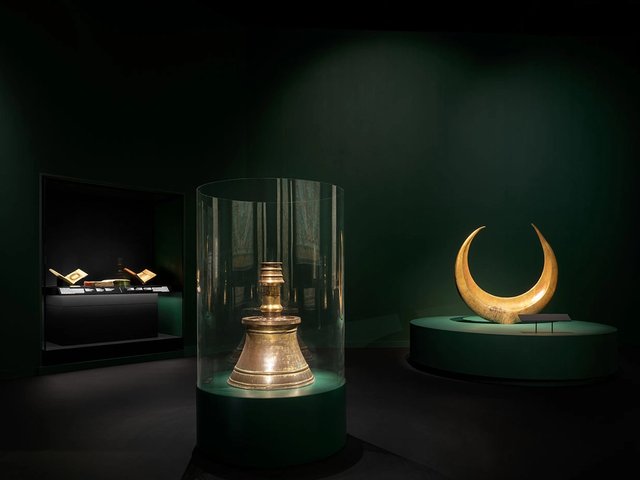The systematic destruction of Saudi Arabia is under way—in silence. Historic mosques, tombs, mausoleums, monuments and houses: more than 90% of the old quarters of the holiest cities of Islam has been razed to make room for a new urban landscape of hotels, shopping centres and apartment blocks. September’s crane accident at the Grand Mosque in Mecca, in which at least 107 people died, highlighted the unstoppable building programme. Recent major projects include the $15bn Abraj Al-Bait, a hotel, shopping and residential complex; its Fairmont Makkah Clock Royal Tower hotel boasts the world’s largest clockface and is the third tallest building in the world. Meanwhile, a 10,000-room “mega-hotel” aims to be the biggest in the world when it opens in 2017.
This obliteration has been happening for decades but the public outcries have been few and far between, limited to rare reports in the UK and US press. Up-to-date photographs are impossible to find since they are carefully censored. Those responsible for the disappearance of an entire universal cultural are not the fanatical terrorists of Isil, who in Syria and Iraq are proudly broadcasting their murders and destruction of ancient treasures to the international media, but the Saudi Arabian government. Quietly, an official programme for the dissolution of the country’s own cultural heritage has been authorised and planned by the state authorities.
Construction works have already transformed Mecca and Medina into cities without a past, dominated by skyscrapers. The declared aim is to build shopping centres and vast residential complexes—luxury and low cost—to host the growing crowds of believers (around 12 million a year) who come from around the world for Hajj, the pilgrimage to the holy places that every good Muslim must make at least once in their lifetime. While the Saudi Kingdom exalts the grandiosity of the new buildings, it is silent over the extensive demolition. This includes the ongoing expansion of the Prophet’s Mosque in Medina, whose spaces have taken over entire areas of the city (at the end of the project there will be capacity for 1.6 million people), and of Mecca’s Al-Haram Mosque, where pilgrims gather to pray around the Kaaba.
The works are part of a $20bn expansion plan begun in 2011, which will mark the definitive disappearance of what remains of Mecca’s Ottoman historic centre and its Islamic sites. A forest of towers is rising at the Jabal Omar complex.
The urban planning has political and economic ends but it is also motivated by the religious ideology of Wahhabi Islam. Wahhabism is the dominant and official faith of Saudi Arabia and the reigning Saud family, the founders of the state. The father of the Wahhabist movement was Muhammad ibn ’Abd al-Wahhab (1703-92), who preached the return of Islam to its earliest origins. It was he who attacked the popular practices of worshiping saints and making pilgrimages to tombs and monuments in their memory, advocating the destruction of sacred sites as symbols of idolatry. These aspects of Wahhabist ideology (merged now with Salafism) lay at the root of the Taliban’s destruction of the Kabul Museum and the Bamiyan Buddhas in Afghanistan in 2001, among many other cases, not only in the Middle East.
The most extreme interpreters of Wahhabism and Salafism today are the terrorists of Islamic State who want to tear down every building and object (though they save those that can be sold on the black market) linked to “other” religions—pre-Islamic and Christian—but also “dubious” monuments or buildings of the Islamic age. Saudi Arabia has been clearing away its own history for almost a century, going into overdrive in the past 20 years. Wahabi integralism has led to the elimination of every trace of an Islam considered “heretic” across the country, but especially in the holy cities. In this vision art, archaeology and culture become empty words. Not even the memory of the first followers and descendants of Muhammad is respected.
Irfan Al-Alawi, the director of the Islamic Heritage Research Foundation, a UK-based institution that has now moved to the US, has for years denounced the disastrous situation. Two years ago in Mecca the 1,300-year-old house of Hamza, the uncle of the prophet, was bulldozed to make way for a hotel. The house where Muhammad was believed to have been born in AD570 has also been demolished for a skyscraper.
The litany of destruction includes the sites associated with the Prophet’s family: the house of Khadija, his first wife, and the tomb of his daughter Fatima, destroyed in Medina as early as the 1920s along with that of his nephew Hasan ibn Ali, the son of Fatima and Ali, the first imam of the Shi’ites. The Hilton hotel now stands on the ruins of the ancient house of Muhammad’s father-in-law. Five of the “Seven Mosques” built by Muhammad’s daughter were demolished 90 years ago. In 2002 Mecca’s Ajyad Fortress, built by the Ottomans in 1780 on a hill overlooking the Grand Mosque, was destroyed; in its place is one of the tallest buildings in the world, the Abraj Al-Bait. The Turkish government reacted with official protests against Saudi Arabia (rejected as undue interference) and a request for backing from Unesco.
The transformation of the two holy cities, Mecca and Medina, is now complete. Few visual testaments—rare films and early photographs that escaped censorship—remain.
Saudi Arabia may boast four Unesco world heritage sites, but none is an Islamic monument. In 2008 the organisation recognised the Nabataean ruins of Al-Hijr; in 2010 the desert settlement At-Turaif, the first capital of the Saudi dynasty from which Wahhabism spread; in 2014 the historic centre of Jeddah, with its Ottoman houses and the so-called Tomb of Eve which was sealed with concrete in 1975 to prevent pilgrims praying in front of it; and in 2015 the rocks of the Hail region, covered in prehistoric inscriptions.
Edek Osser is a conservation, heritage and archaeology correspondent for our sister paper Il Giornale dell’Arte



